Sufganiyot (Israeli Donuts)
This post may contain affiliate links. Read my full disclosure policy.
A cross between a beignet and a jelly donut, sufganiyot are pillowy donuts that are eaten in Israel and around the world during Hanukah.
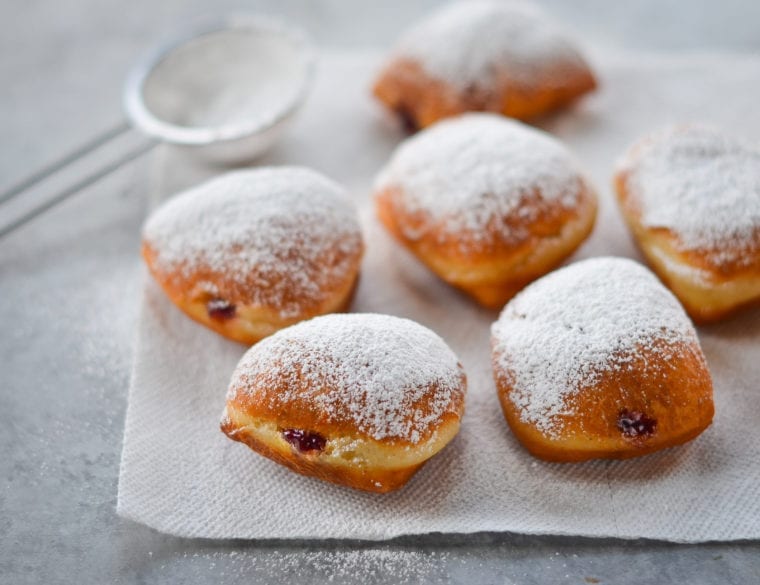
A cross between a beignet and a jelly donut, sufganiyot are pillowy donuts eaten in Israel and around the world during Hanukkah, when foods fried in oil symbolize the miracle of oil that burned for eight days instead of one in the Hanukkah story. Sufganiyot are traditionally filled with jelly or jam, but if your crew doesn’t care for jelly in their donuts (my son once described biting into a jelly donut as “a terrible surprise”), the filling options are limitless: custard, Nutella, pudding, pumpkin butter, apple butter, or dulce de leche are all great options. Sufganiyot are also delicious plain.
Table of Contents
“Wow! I’m so grateful for this no-knead recipe! I was able to make these fairly easily, and I am no star baker. They came out great — I’m so proud!”
I know that making donuts at home can seem a little daunting because yeast and hot oil are involved but, I promise, it really is simple—and this recipe is faster and easier than most because the dough is not kneaded and requires only a single rise. If you need a little encouragement to give donut-making a shot, watch this video of celebrated cookbook author and authority on all Jewish food-related things, Joan Nathan, making sufganiyot in Jaffa, Israel. It makes me want to hop on a plane!
What You’ll Need To Make Sufganiyot
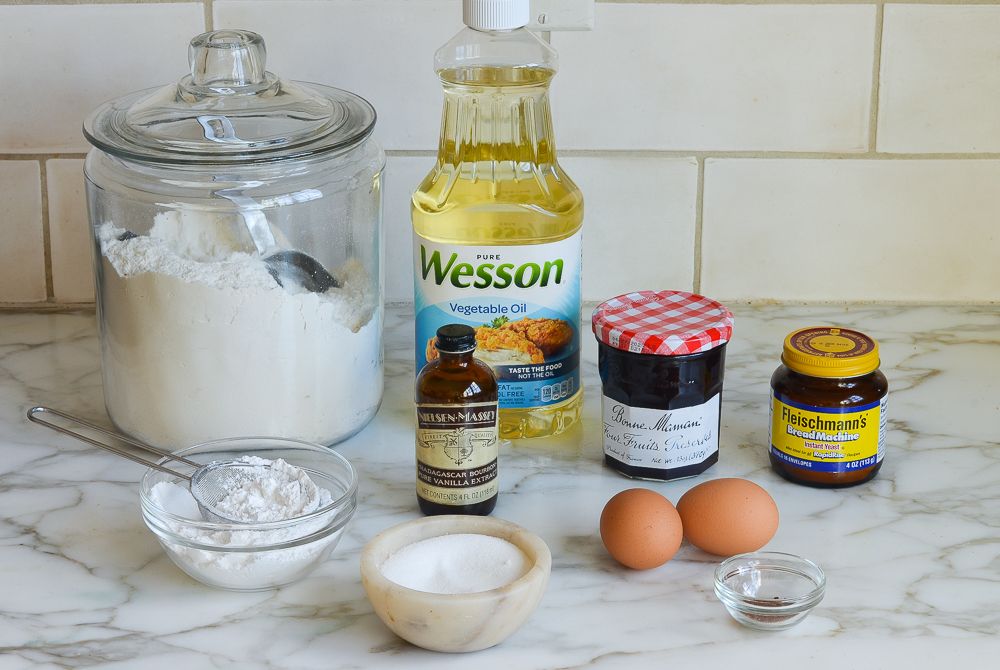
How To Make Sufganiyot
To begin, combine the warm water and yeast in a small bowl and let sit until foamy, about 5 minutes.
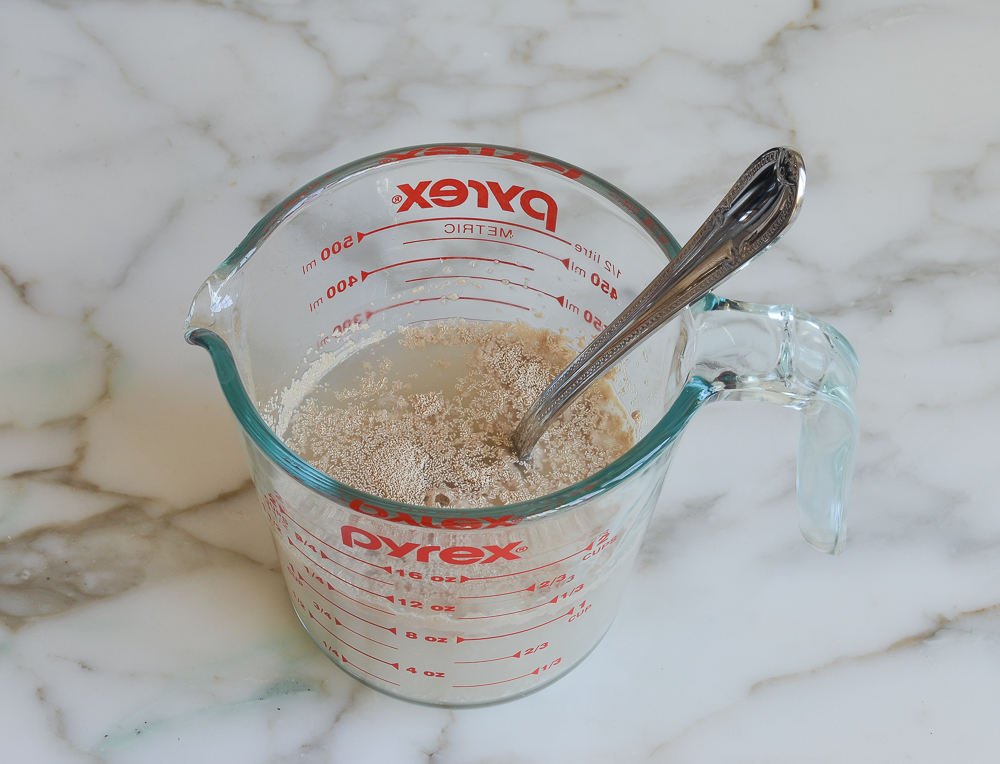
Warm water helps activate the yeast. The temperature doesn’t need to be exact so no need to use a thermometer; just try to get it about the temperature of bath water. (If you place your hand under the stream of water in the faucet, it should feel hot but you should be able to leave your hand there without it stinging.)
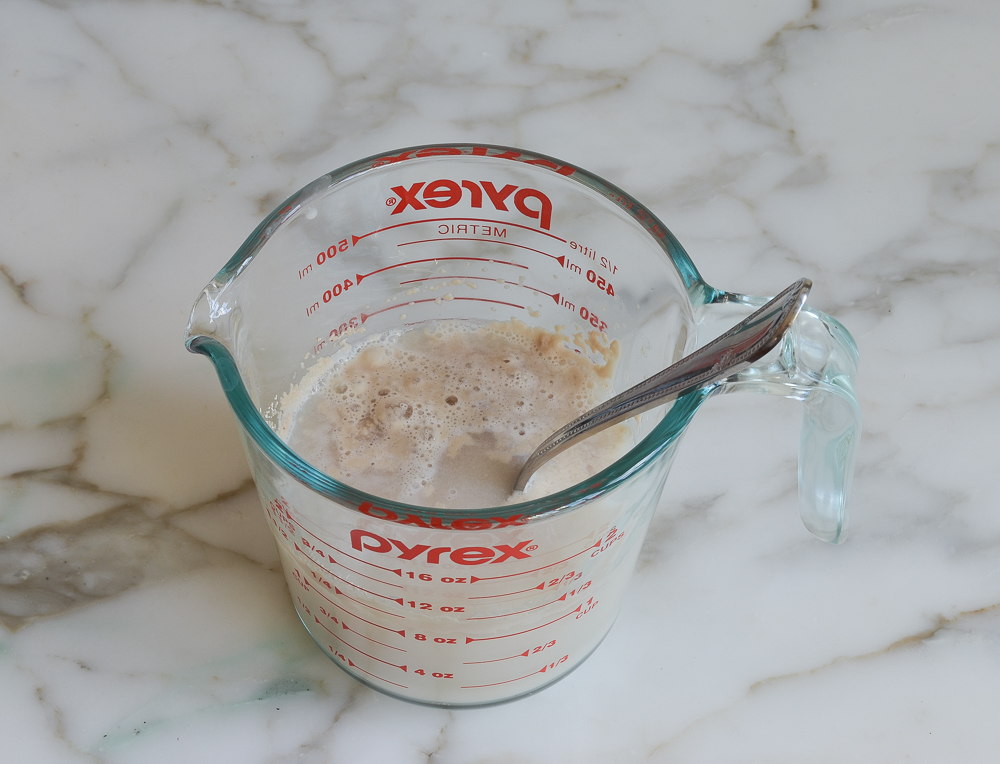
Add the egg yolks, 2 tablespoons of oil, and vanilla to the water/yeast mixture and whisk with a fork until combined.
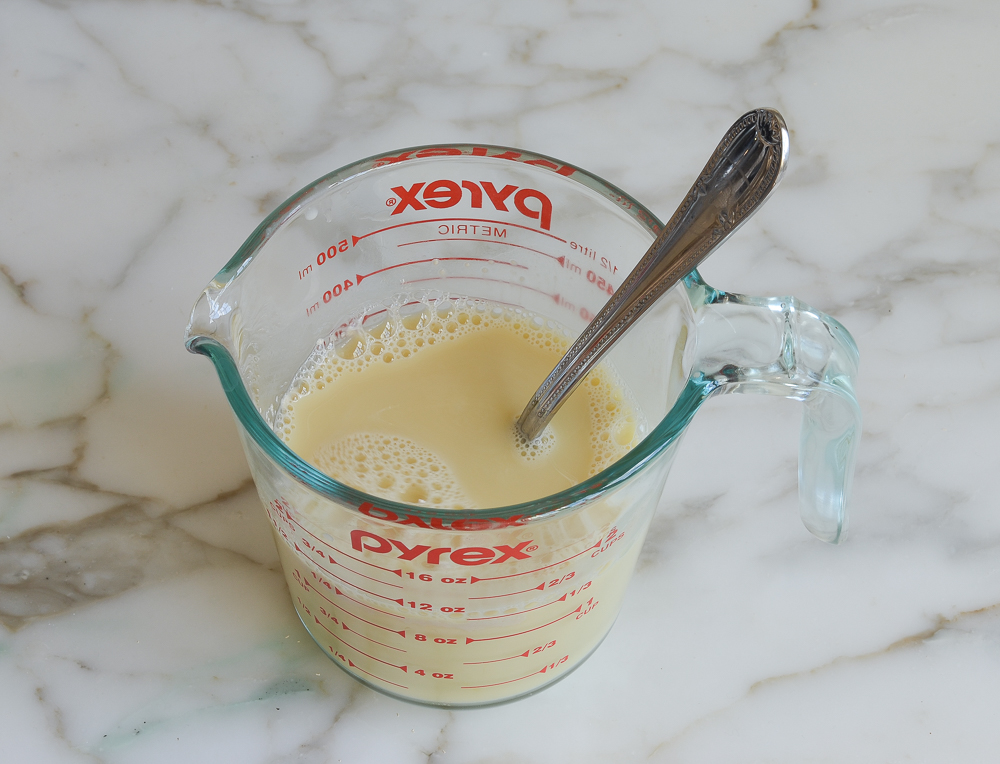
Meanwhile, in a large bowl, combine the flour, confectioners’ sugar, salt, and nutmeg.
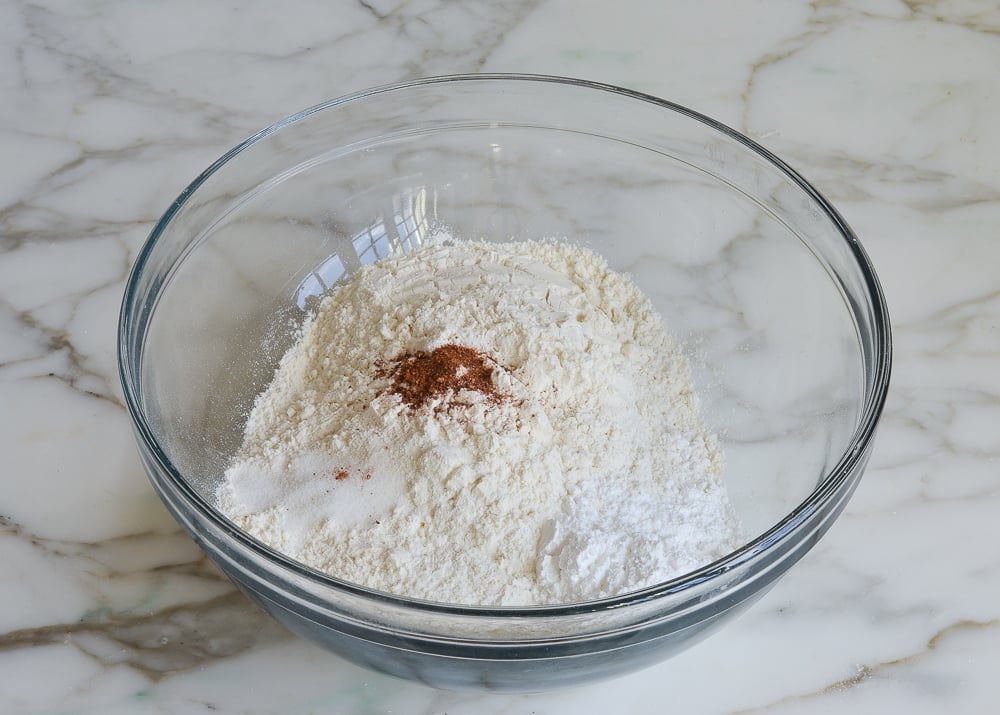
Whisk to combine.
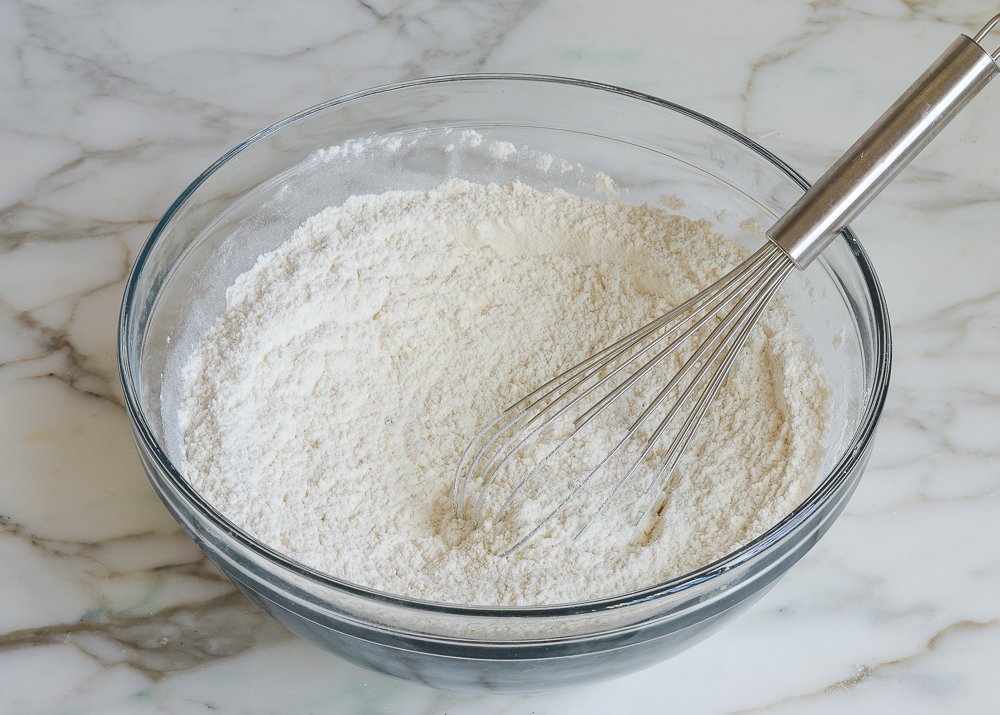
Add the liquid mixture to the flour mixture.
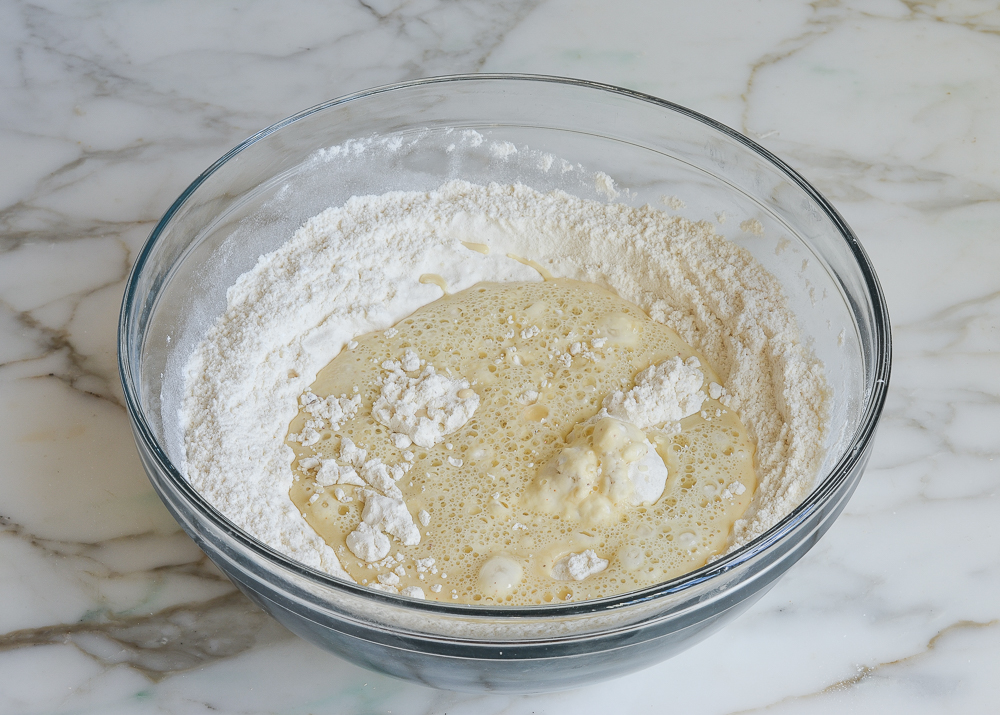
Stir with rubber spatula until the dough comes together. It should be a bit sticky.
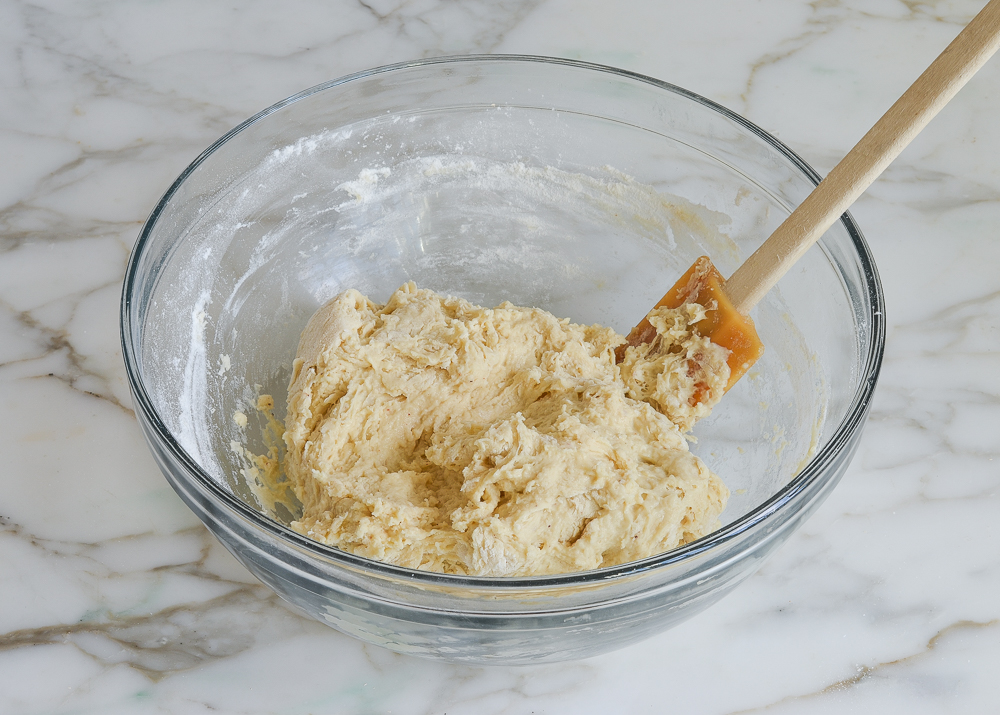
Cover the bowl with plastic wrap (no need to clean it first).
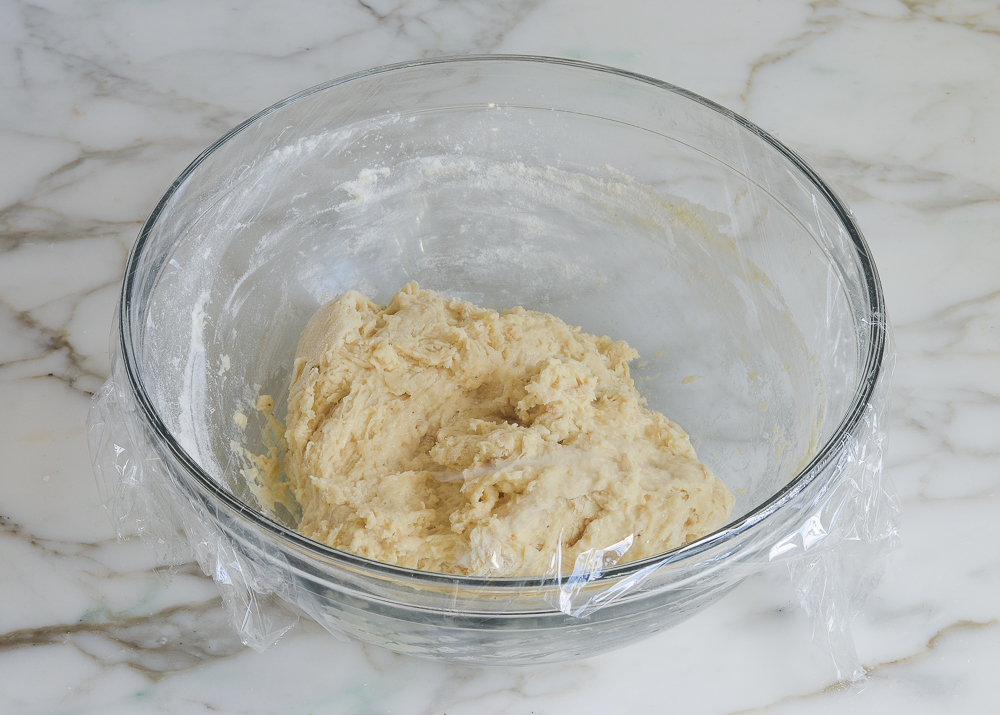
Let the dough rise on the countertop until doubled in size, 1 to 2 hours.
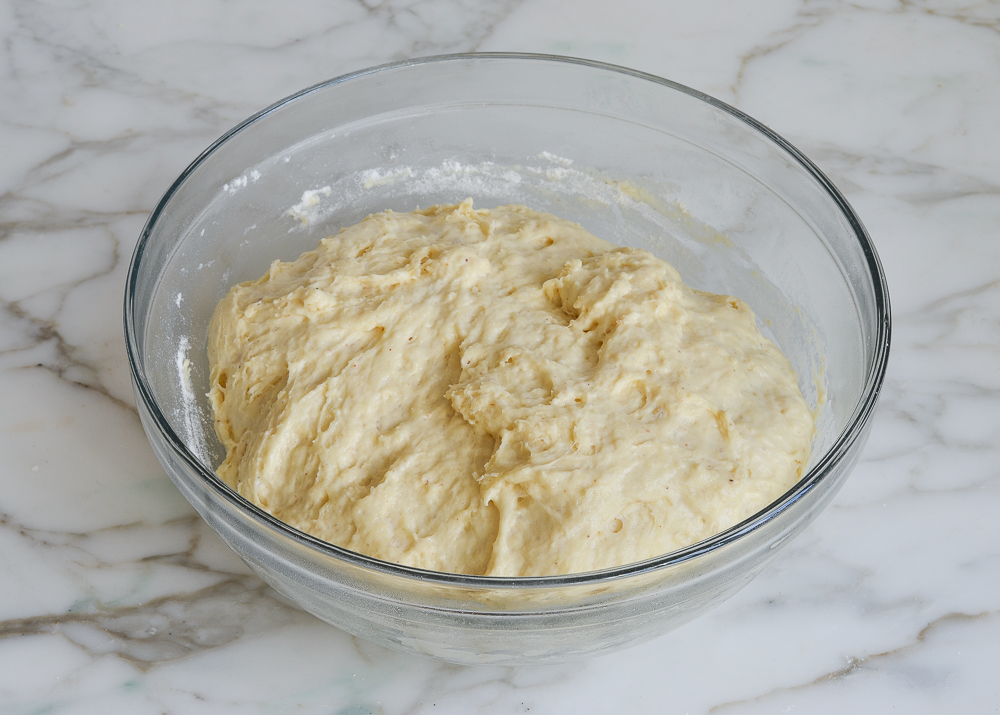
Line a baking sheet with a few layers of paper towels. Line another baking sheet with parchment paper and dust heavily with flour. Generously dust a clean countertop and your hands with flour. Scrape the dough out of the bowl onto the counter and dust the dough with flour.
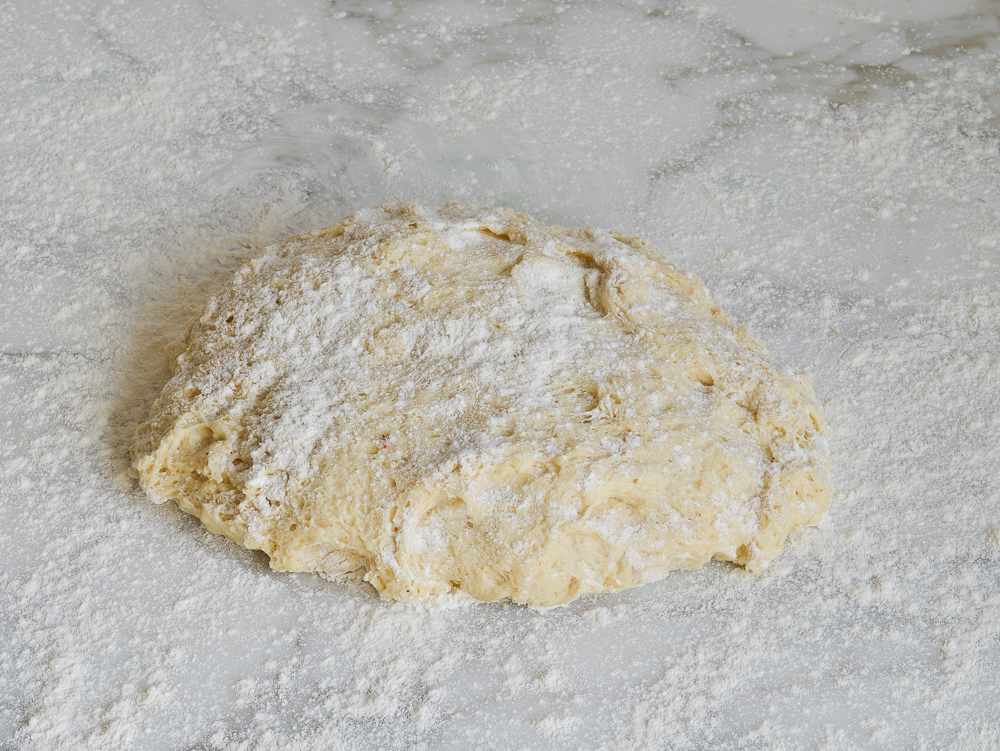
Pat the dough into 1/4-in-thick rectangle, making sure the bottom doesn’t stick and adding more flour to the counter and your hands as needed.
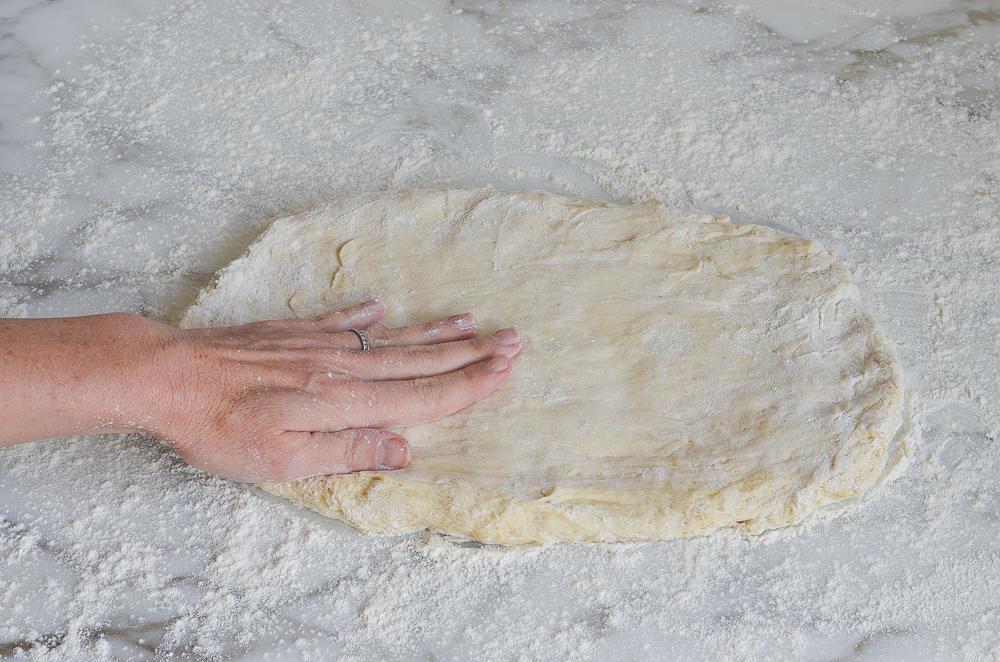
It should be about 10 to 12 inches in size.
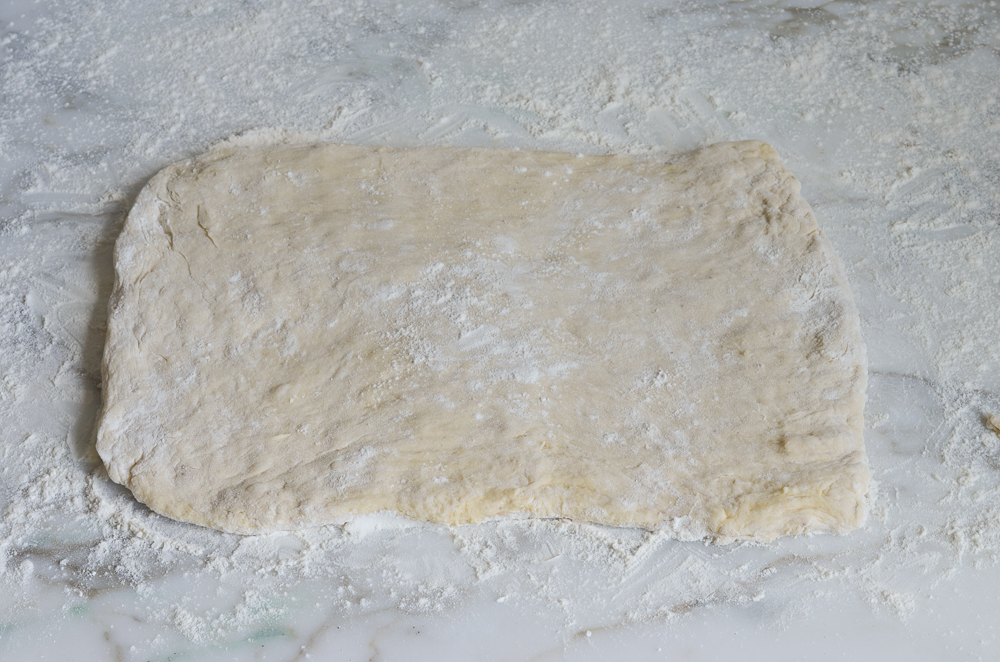
Using a pizza wheel or very sharp knife, cut the dough into 24 two-inch squares. Sufganiyot are traditionally round but I much prefer to make them square — you don’t need to worry about having the right-sized cookie cutter or patching together scraps of dough.
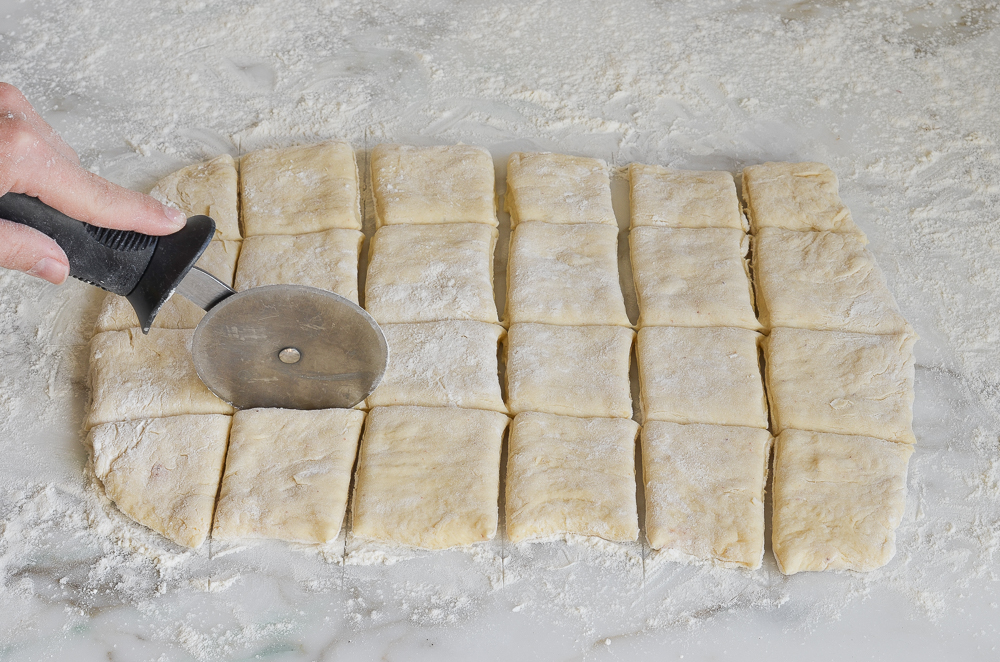
Transfer the dough squares to the floured baking sheet, leaving a little space between the squares. Sprinkle the squares lightly with flour.
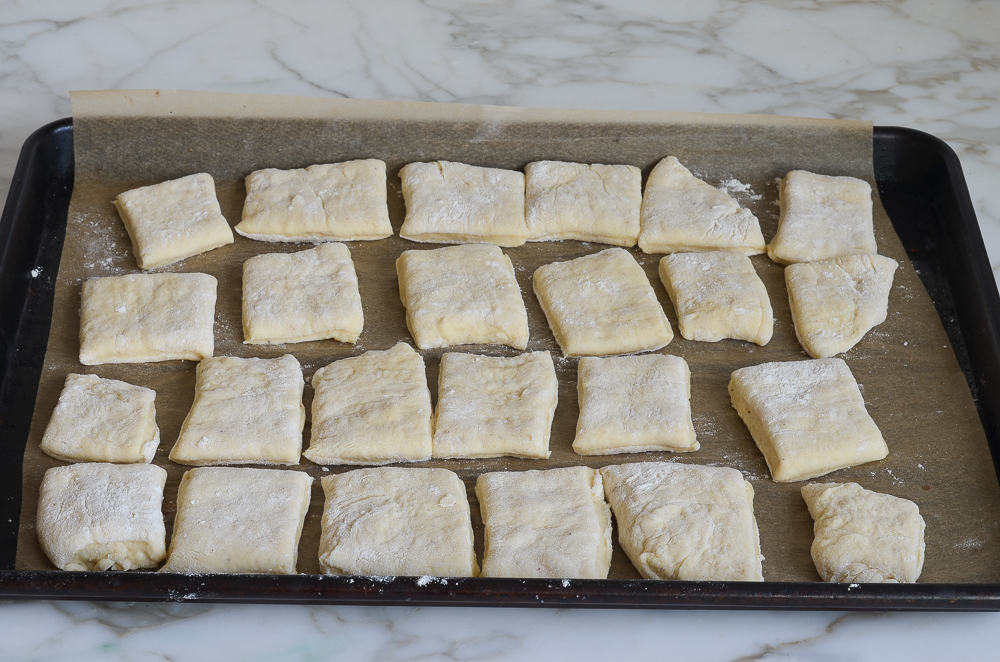
Add enough of oil to a large Dutch oven or heavy pot to measure about 2 inches deep and heat over medium heat to 350°F. (If you don’t have a candy/deep-fry thermometer, drop a 1-in cube of bread in the oil; if it takes about 1 minute to get golden brown, the oil is at the right temperature.) Place 6 dough pieces in the oil and fry until golden brown, about 3 minutes, flipping halfway through frying.
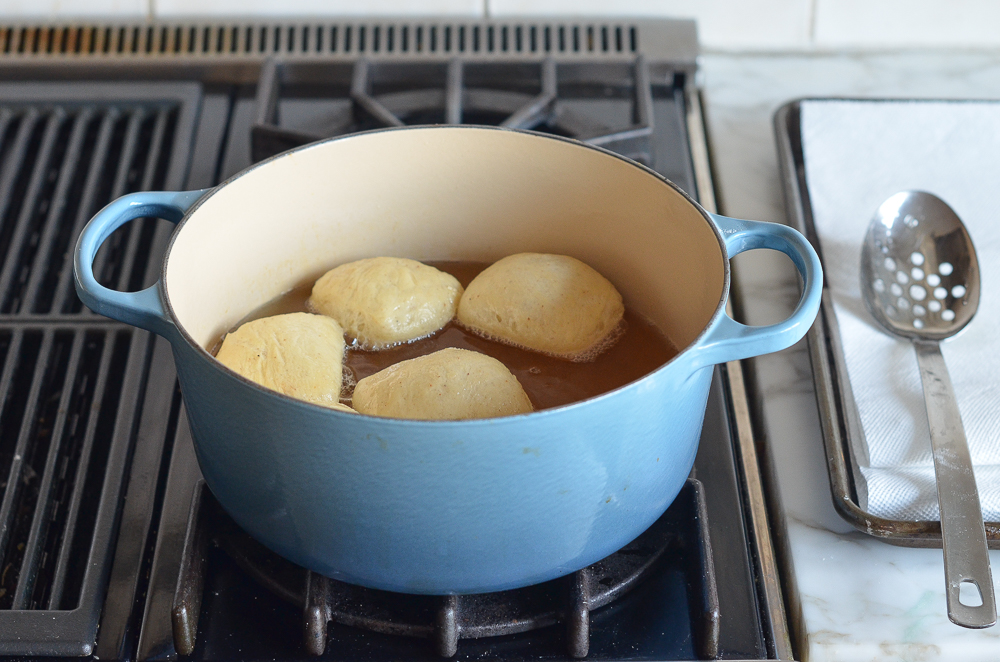
Adjust the heat, if necessary, to maintain the oil temperature between 325°F and 350°F.
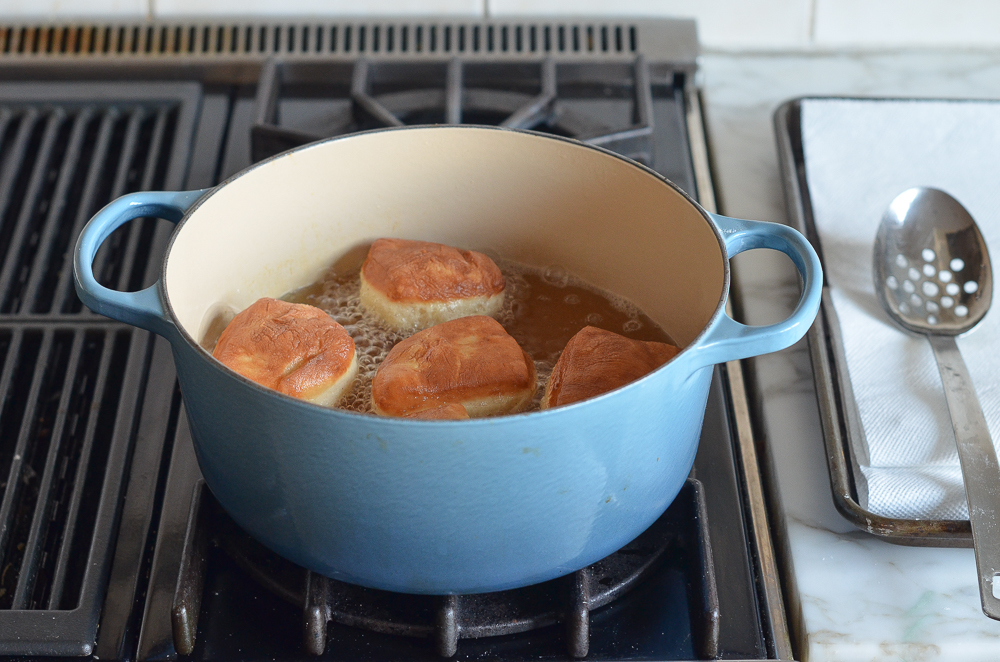
Using a slotted spoon, transfer the donuts to the paper towel-lined baking sheet. Repeat with the remaining donuts.
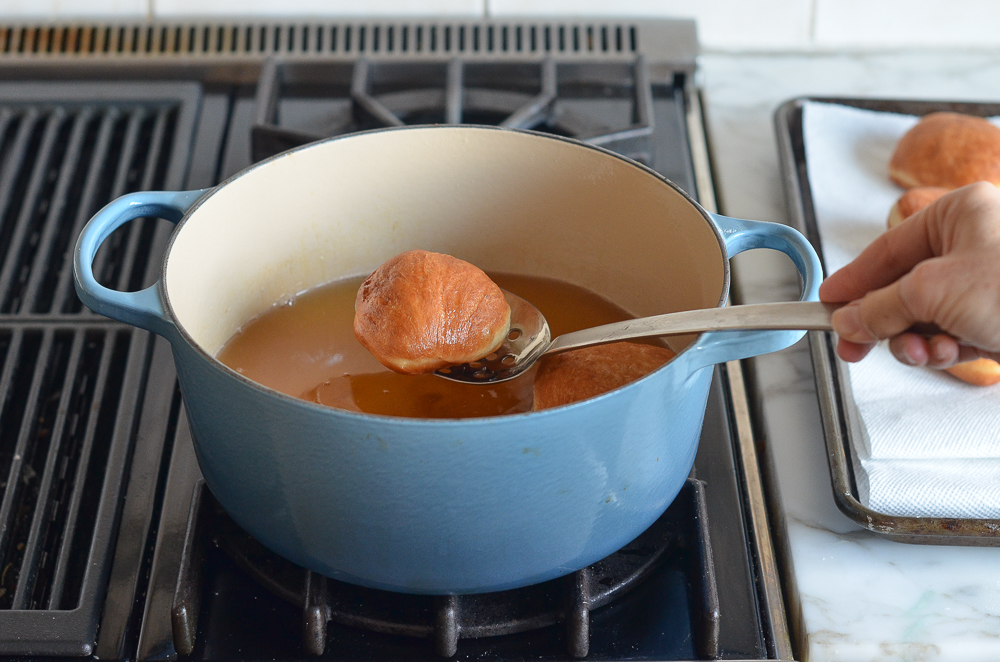
Use a paring knife to puncture the side of each to form a pocket in the center.
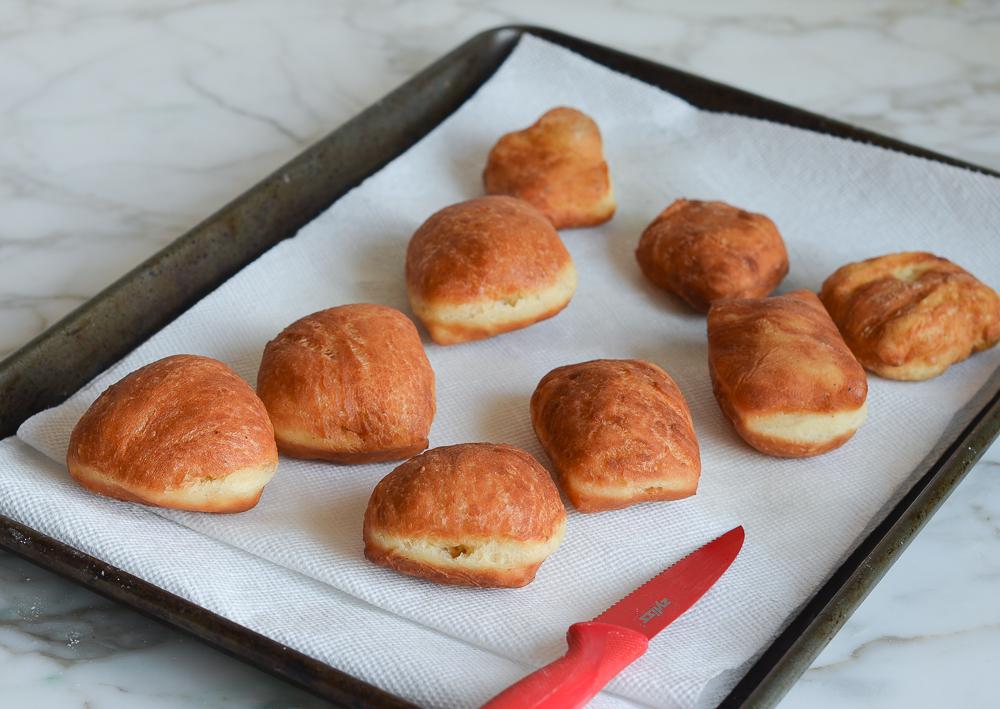
Place the tip of a squeeze bottle or piping bag into the pocket and squeeze 1 to 2 teaspoons of jam or jelly inside. (Alternatively, if you don’t have the right tools or just don’t want to bother, serve the filling on the side.)
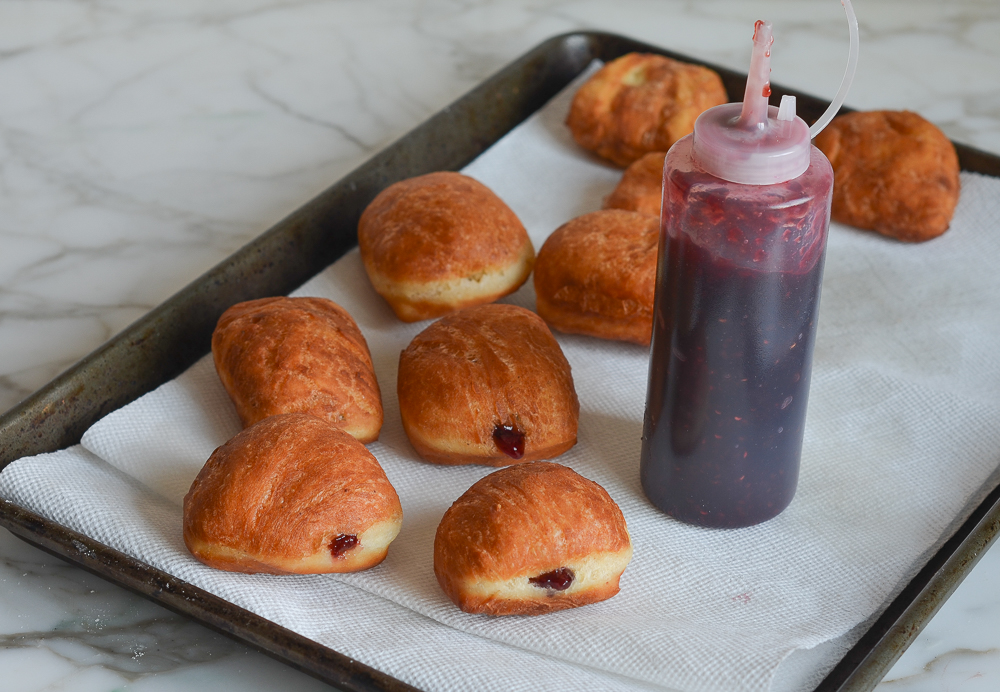
Using a fine sieve, dust the donuts generously with confectioners’ sugar. Serve warm.
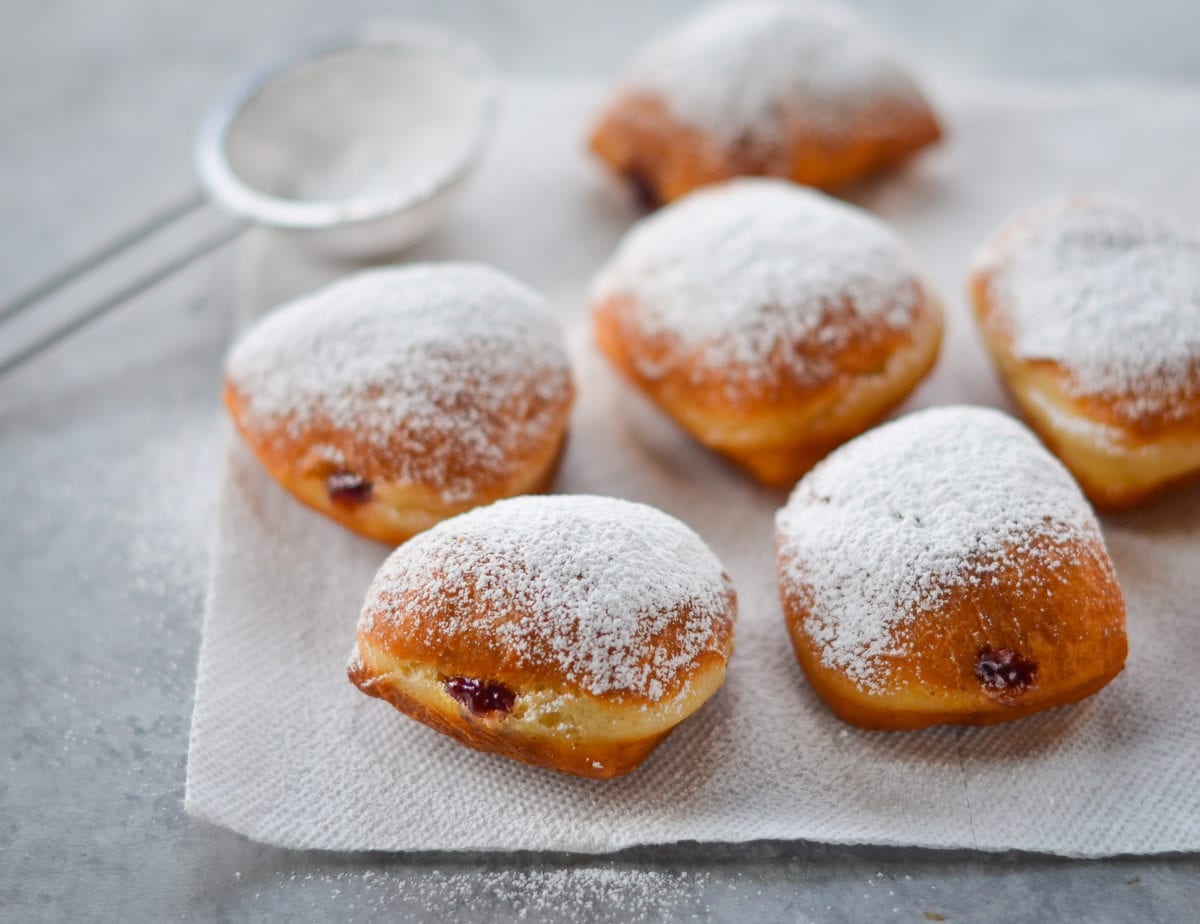
You May Also Like
Sufganiyot (Israeli Donuts)
A cross between a beignet and a jelly donut, sufganiyot are pillowy donuts that are eaten in Israel and around the world during Hanukah.
Ingredients
- 1 cup warm water, heated to about 110°F (see note)
- 1 tablespoon instant/rapid-rise or active dry yeast (note that this is more than 1 packet)
- 3 cups all-purpose flour, spooned into measuring cup and leveled-off
- ¼ cup confectioners' sugar, plus more for coating
- ¾ teaspoon salt
- ½ teaspoon ground nutmeg
- 2 large egg yolks
- 2 tablespoons vegetable oil, plus about 2 quarts more for frying
- 1 teaspoon vanilla extract
- About 1 cup jam or jelly (or custard, Nutella, pudding, pumpkin butter, apple butter, dulce de leche, etc.), optional
Instructions
- Combine the water and yeast in a small bowl and let sit until foamy, about 5 minutes.
- Meanwhile, in a large bowl, combine the flour, confectioners' sugar, salt, and nutmeg. Whisk to combine and set aside.
- Add the egg yolks, 2 tablespoons of oil, and vanilla to the water/yeast mixture and whisk with a fork until combined.
- Add the liquid mixture to the flour mixture and stir with rubber spatula until the dough comes together. It should be a bit sticky. Cover the bowl with plastic wrap (no need to clean it first) and let the dough rise on the countertop until doubled in size, 1 to 2 hours.
- Line a baking sheet with a few layers of paper towels. Line another baking sheet with parchment paper and dust heavily with flour. Generously dust a clean countertop and your hands with flour. Scrape the dough out of the bowl onto the counter and dust the dough with flour. Pat the dough into ¼-in-thick rectangle (it should be about 10 x 12-inches in size), making sure the bottom doesn't stick and adding more flour to the counter and your hands as needed. Using a pizza wheel or very sharp knife, cut the dough into 24 two-inch squares and transfer to the floured baking sheet, leaving a little space between the squares. Sprinkle the squares lightly with flour.
- Add enough of oil to a large Dutch oven or heavy pot to measure about 2 inches deep and heat over medium heat to 350°F. (If you don't have a candy/deep-fry thermometer, drop a 1-in cube of bread in the oil; if it takes about 1 minute to get golden brown, the oil is at the right temperature.) Place 6 dough pieces in the oil and fry until golden brown, about 3 minutes, flipping halfway through frying. Adjust the heat, if necessary, to maintain the oil temperature between 325°F and 350°F. Using a slotted spoon, transfer the donuts to the paper towel-lined baking sheet. Repeat with the remaining donuts.
- When the donuts are cool enough to handle, use a paring knife to puncture the side of each to form a pocket in the center. Place the tip of a squeeze bottle or piping bag into the pocket and squeeze 1 to 2 teaspoons of jam or jelly inside. (Alternatively, if you don't have the right tools or just don't want to bother, serve the filling on the side.)
- Using a fine sieve, dust the donuts generously with confectioners’ sugar. Serve warm.
- Note: Warm water helps activate the yeast. The temperature doesn't need to be exact so no need to use a thermometer; just try to get it about the temperature of bath water. (If you place your hand under the stream of water in the faucet, it should feel hot but you should be able to leave your hand there without it stinging.)
- Nutritional information was calculated assuming that approximately ¼ cup of the oil is absorbed into the donuts when frying and 1 tablespoon confectioners' sugar was used to dust the the finished donuts.
- Make-Ahead Instructions: The dough can be made a day ahead of time and refrigerated. Let it sit out at room temperature for about an hour before rolling out and cutting.
Nutrition Information
Powered by ![]()
- Per serving (24 servings)
- Serving size: 1 donut
- Calories: 138
- Fat: 4 g
- Saturated fat: 0 g
- Carbohydrates: 23 g
- Sugar: 8 g
- Fiber: 1 g
- Protein: 2 g
- Sodium: 78 mg
- Cholesterol: 15 mg
This website is written and produced for informational purposes only. I am not a certified nutritionist and the nutritional data on this site has not been evaluated or approved by a nutritionist or the Food and Drug Administration. Nutritional information is offered as a courtesy and should not be construed as a guarantee. The data is calculated through an online nutritional calculator, Edamam.com. Although I do my best to provide accurate nutritional information, these figures should be considered estimates only. Varying factors such as product types or brands purchased, natural fluctuations in fresh produce, and the way ingredients are processed change the effective nutritional information in any given recipe. Furthermore, different online calculators provide different results depending on their own nutrition fact sources and algorithms. To obtain the most accurate nutritional information in a given recipe, you should calculate the nutritional information with the actual ingredients used in your recipe, using your preferred nutrition calculator.


how much yeast and water to the initial mixture
Hi Skottie, You’ll need 1 cup water and 1 tablespoon instant/rapid-rise or active dry yeast. Hope you enjoy!
Dear Jenn:
I am a huge fan of your website. I wanted to share with yourself and your readers some interesting information I found on Wikipedia about the history of Sufganiyot (Israeli donuts). The link is below and can be copied into your browser.
Thank you for providing such a fabulous website and such amazing and easy-to-follow recipes. I look forward to making these donuts! My family is looking forward to Hanukkah this year. May you and your family have a Happy Hanukkah as well.
https://en.wikipedia.org/wiki/Sufganiyah
Hi Jenn –
I’m just curious if I can substitute Cup4Cup gluten free flour in this recipe, for the regular flour without any additional changes ??
Thank you,
Danielle
Hi Danielle, It may work, but I’ve never made them with gluten-free flour so I can’t say for sure – I’m sorry! If you do try it, I’d love to hear how they turn out!
I’ve been making all kind of yeast and Sourdough bread for a couple of years.
I have watched hundreds of YouTube bread making demonstrations and read by now maybe thousands of questions and answers on the matter of the use of gluten free flour to make bread.
To make a long story shorter: Gluten is what makes the flour, water and yeast (or Sourdough hold together so the dough can expand/rise.
Maybe you can do it but with baking powder. I’ve never made it though. I would look for recipes of gluten free doughnuts. I think you should be able to find it.
Happy Hanukkah!
Hi! I will so try this! Love these pastries!
Did you ever try to cook them in the oven?
I have tried before with another recipe, but i was wondering if i could use this one.
Thank you so much!
Hi Joana, I haven’t prepared these in the oven and think you’ll get the best results frying them. If you’d really prefer to bake them, there are a number of recipes online for baked options. Hope that helps!
Picky husband and toddler approved. My little guy gave it five thumbs up. These are great for Christmas morning. Thank you!
Great recipe, thanks. I suggest a bit extra sugar and watch out for too much nutmeg. Was fun to try this!
The instructions were exact and the sufganiyot came out perfectly! Thank you!
This is a fantastic recipe. I thought to share BUT….
It’s not happening.
I will highly recommend this one to love ones.
❤️❤️❤️
I made these last year for Hanukkah and, while I was initially intimidated by the prospect, they were amazing: far, far superior to the store-bought ones that friends had purchased. The recipe was clear and easy to follow: Thank you! My only advice is to buy high quality jam for the filling (I went with Bonne Maman four-fruit preserve). I will be definitely making these again for this year’s Hanukkah celebration!
I loved this recipe! It was easy to follow your step by step instructions with pics. By no means do I consider myself a baker but you made it easy! Much appreciated.
Hello jenn, instead of frying the dough can I bake it in the oven?
Hi Janet, I think you’ll definitely get the best results by frying these. If you really want to bake them, there are a number of recipes online for baked versions. Hope that helps!